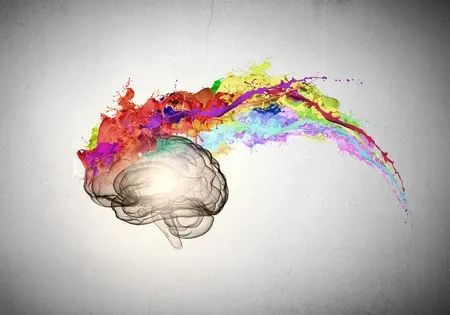最近,一场意外死亡的悲剧让科学家在无意间,首次记录下人类死亡过程中的大脑活动。这项最新研究指出,死亡时的大脑比我们预想的更加活跃,甚至可能是在回顾一生。
A replay of life: What happens in our brain when we die?

Imagine reliving your entire life in the space of seconds. Like a flash of lightning, you are outside of your body, watching memorable moments you lived through. This process, known as ‘life recall’, can be similar to what it’s like to have a near-death experience. What happens inside your brain during these experiences and after death are questions that have puzzled neuroscientists for centuries. However, a new study published to Frontiers in Aging Neuroscience suggests that your brain may remain active and coordinated during and after the transition to death, and may even be programmed to orchestrate the whole ordeal.
想象一下,在生命的最后几秒钟回顾你的整个人生,自己的意识似乎脱离了躯体,脑海中走马灯一般快速回忆起一生经历过的难忘时刻。这个过程被称为“生命回忆”,人在濒临死亡时也会出现相似的“濒死体验”。在经历这些“濒死体验”和死后,人的大脑内部发生了什么是困扰神经科学家几个世纪的问题。然而,发表在《衰老神经科学前沿》(Frontiers in Aging Neuroscience)上的一项新研究表明,死亡时的大脑比我们预想的更加活跃,甚至可能的确是在回顾一生。
When an 87-year-old patient developed epilepsy, Dr Raul Vicente of the University of Tartu, Estonia and colleagues used continuous electroencephalography (EEG) to detect the seizures and treat the patient. During these recordings, the patient had a heart attack and passed away. This unexpected event allowed the scientists to record the activity of a dying human brain for the first time ever.
当一名 87 岁的男性患者出现癫痫症状时,爱沙尼亚塔尔图大学的科学家 Raul Vicente 博士及其同事使用连续脑电图 (EEG) 来监测患者的癫痫症状并进行治疗。但就在监测过程中,患者突然心脏病发作并去世。这一意外使科学家们有史以来第一次记录了垂死的人类大脑的活动。
Findings ‘challenge our understanding of when exactly life ends’
研究结果“对于生命何时终结的看法提出了挑战”
“We measured 900 seconds of brain activity around the time of death and set a specific focus to investigate what happened in the 30 seconds before and after the heart stopped beating,” said Dr Ajmal Zemmar, a neurosurgeon at the University of Louisville, US, who organised the study.
这项研究的领导者,美国路易斯维尔大学的神经外科医生 Ajmal Zemmar 博士说:“我们持续监测了患者死亡前后共 900 秒的大脑活动,并特别关注研究心脏停止跳动前后 30 并且特别关注了心跳停止前后各30秒的数据。”

“Just before and after the heart stopped working, we saw changes in a specific band of neural oscillations, so-called gamma oscillations, but also in others such as delta, theta, alpha and beta oscillations.”
“就在心脏停搏之前和之后,我们看到了特定的神经振荡波段的变化,即所谓的伽马振荡,以及其他的变化,如德尔塔、西塔、阿尔法和贝塔振荡。”
Brain oscillations (more commonly known as ‘brain waves’) are patterns of rhythmic brain activity normally present in living human brains. The different types of oscillations, including gamma, are involved in high-cognitive functions, such as concentrating, dreaming, meditation, memory retrieval, information processing, and conscious perception, just like those associated with memory flashbacks.
脑振波(通常称为“脑电波”)是人类大脑中通常存在的有节奏的大脑活动模式。包括伽马波在内的不同类型的振荡波与高阶认知功能有关,例如集中注意力、产生梦境、冥想、记忆提取、信息处理和有意识的认知,而此前濒死体验报告中的记忆闪回,同样属于这一范畴。
“Through generating oscillations involved in memory retrieval, the brain may be playing a last recall of important life events just before we die, similar to the ones reported in near-death experiences,” Zemmar speculated. “These findings challenge our understanding of when exactly life ends and generate important subsequent questions, such as those related to the timing of organ donation.”
“通过形成参与记忆提取过程的脑波,大脑可能在临死时最后一次回顾了一生的重要事件,这一点与那些濒死体验的报告相似。” Zemmar博士说,“这些发现向我们对于生命何时终结的看法提出了挑战,同时也产生了新的问题,例如器官捐献的合适时间。”
A source of hope
希望的源泉
While this study is the first of its kind to measure live brain activity during the process of dying in humans, similar changes in gamma oscillations have been previously observed in rats kept in controlled environments. This means it is possible that, during death, the brain organises and executes a biological response that could be conserved across species.
虽然这项研究首次监测到人类死亡过程中的大脑活动,但在此之前,也有研究在大鼠实验中观察到类似的伽马波异常。这意味着在死亡过程中,大脑的生物学响应可能在不同物种间具有保守性。
These measurements are, however, based on a single case and stem from the brain of a patient who had suffered injury, seizures and swelling, which complicate the interpretation of the data. Nonetheless, Zemmar plans to investigate more cases and sees these results as a source of hope.
然而,这些研究结果仅是基于单个病例,并且这位患者此前遭受了脑部损伤、癫痫和血肿,这些症状都使得对数据的解释更加错综复杂。尽管如此,Zemmar博士计划研究更多案例,并将这些结果视为希望的源泉。
“Something we may learn from this research is: although our loved ones have their eyes closed and are ready to leave us to rest, their brains may be replaying some of the nicest moments they experienced in their lives.”
“我们可以从这项研究中学到的是:虽然我们所爱的人已经闭上了双眼,准备与世长辞,但他们的脑海中可能正在回顾一生中最美好的片段。”